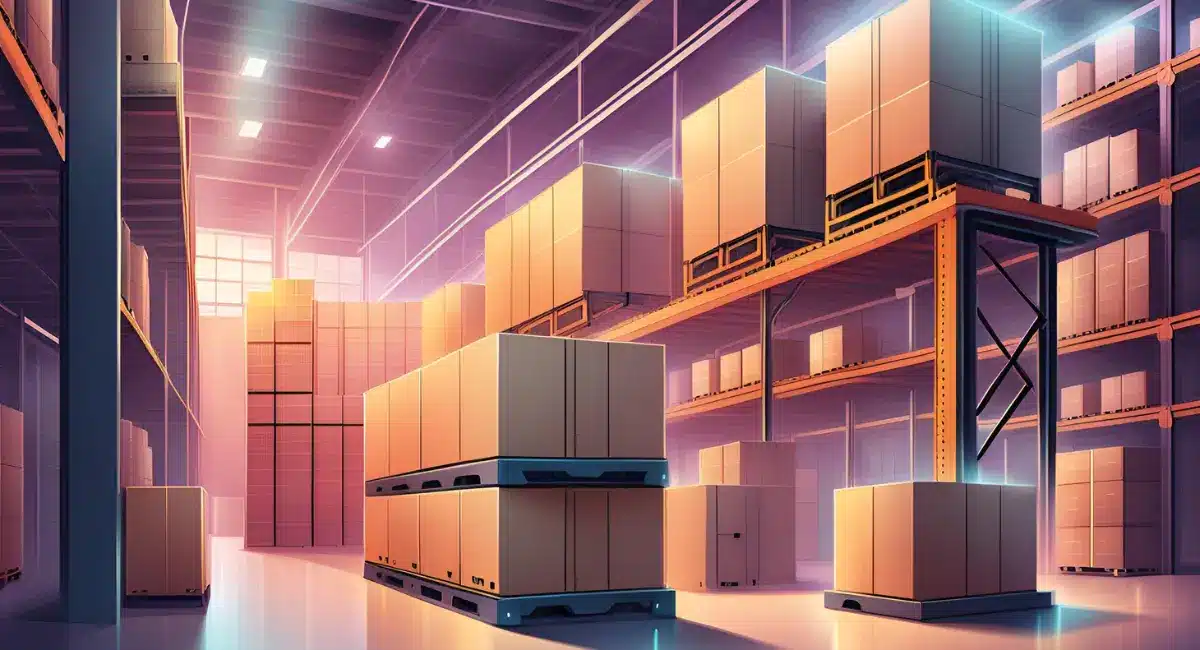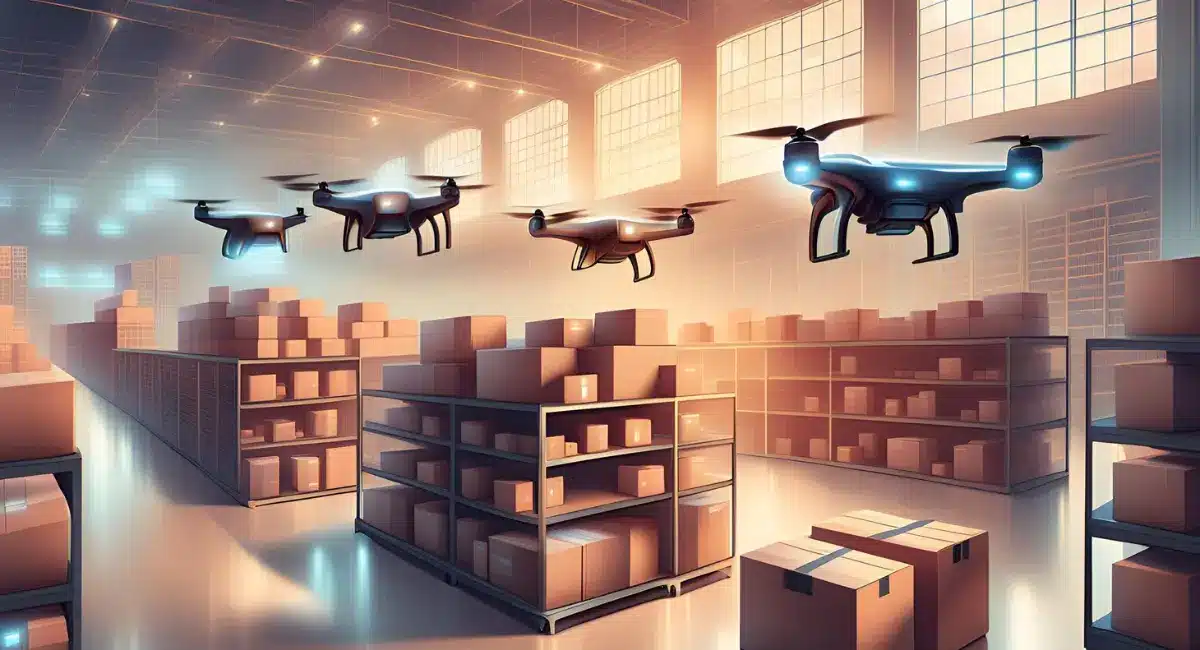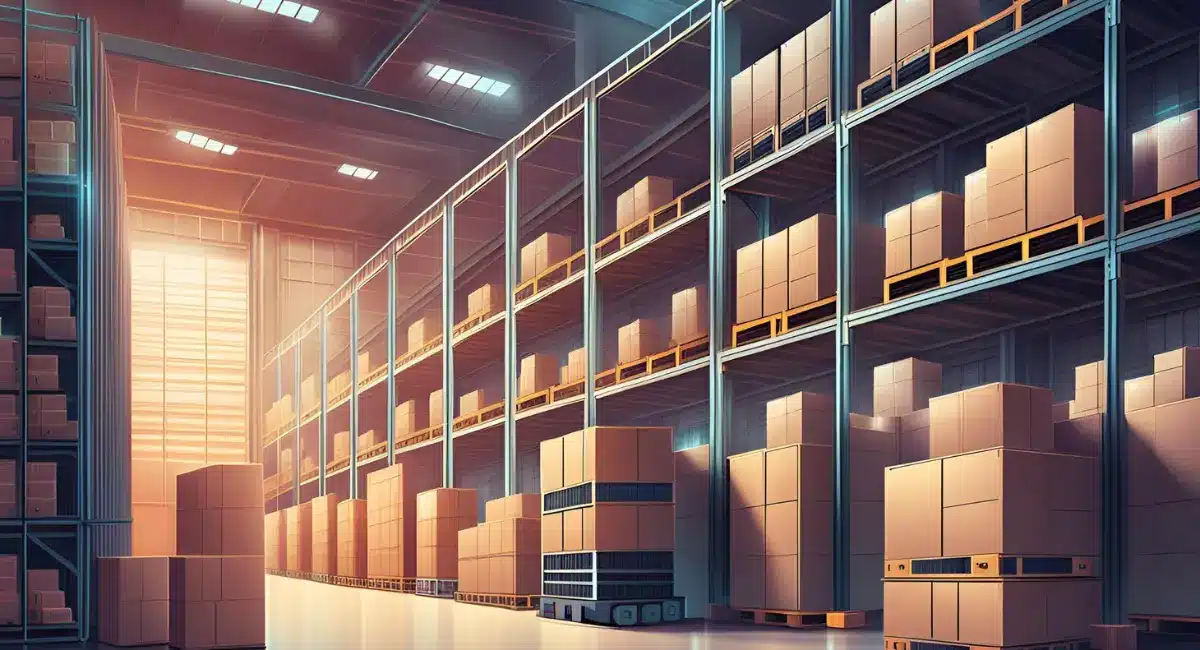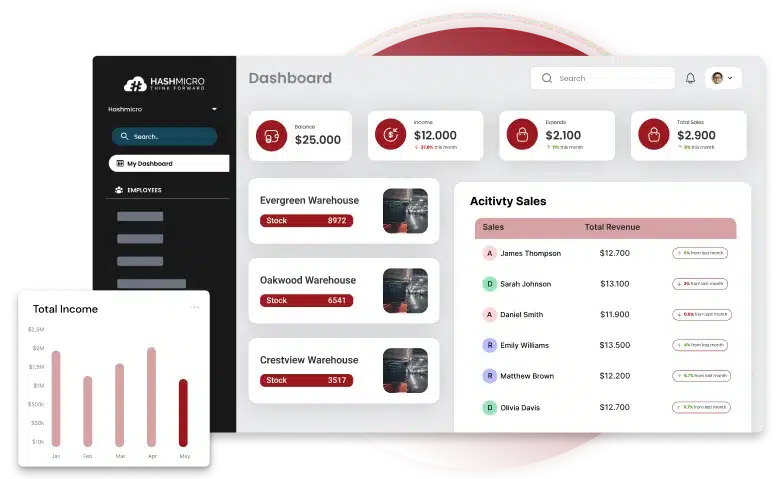Does your business spend too much money on maintenance and operational disruptions? Or experiencing constant coordination issues between departments? If so, you’re not alone.
Currently, many businesses in the Philippines face similar challenges when managing warehouses. Thankfully, automated warehousing offers a smart solution by using technology to make your operations smoother, faster, and more cost-effective.
By automating tasks like tracking inventory and processing orders, your business can run more efficiently, reducing errors and speeding up operations.
For businesses across the Philippines, warehouse automation makes it easier to manage growth, cut labor costs, and stay ahead in a competitive market. The country’s warehouse sector, valued at about USD 750 million in 2022, is expected to reach USD 1.2 billion by 2030, growing steadily at around 6.5% per year.
With this growth on the horizon, now is the perfect time to explore how automation can transform your warehouse operations. By reading this article, let’s dive into what warehouse automation is, how you can implement it, and the valuable benefits it brings to your business.
Key Takeaways
|
Table of Contents
What is Warehouse Automation?
Warehouse automation is the use of machinery and technology to automate certain parts of warehouse operations. An automated warehouse involves using technology and machinery to improve how warehouses operate.
It includes tasks like moving products, managing inventory, and fulfilling orders. The main goal is to make processes faster and more efficient, helping businesses save money and reduce errors.
By automating manual tasks, companies can lower labor costs and increase productivity. For example, using robots to transport heavy packages allows workers to focus on more important tasks, speeding up operations and keeping employees safe from injuries.
In addition to robots, warehouse automation also includes smart software systems, like a Warehouse Management System (WMS). This software helps businesses track inventory levels, organize storage spaces, and fulfill orders more accurately and quickly.
With real-time data, companies can make better decisions and manage their inventory effectively. Many warehouses in the Philippines still rely on manual processes, but investing in automation can lead to significant benefits.
Even though some businesses may hesitate because of initial costs, the long-term savings and improved customer satisfaction often make it worthwhile.
How Does Warehouse Automation Work?

Warehouse automation transforms how businesses operate by using technology to make everyday tasks faster and more efficient. Here’s how it works in a friendly and engaging way:
-
Spotting Tasks to Automate
First, businesses take a good look at their operations to identify tasks that can be automated. This might include moving items, managing inventory, or picking orders. By pinpointing these repetitive tasks, companies can focus on automating areas that will save them time and reduce errors.
-
Embracing Technology
Next, it’s all about the tools! Automation technologies like conveyor systems help transport items quickly and smoothly throughout the warehouse. This not only lightens the load for employees but also speeds up order fulfillment.
-
Using a Warehouse Management System (WMS)
A Warehouse Management System is like a central nervous system for a warehouse. It keeps track of inventory levels in real-time, streamlines processes, and provides valuable data to help make better business decisions. With a WMS, all parts of the warehouse communicate seamlessly.
-
Making Picking Easier
Automation also improves how items are picked. For instance, robots can efficiently retrieve items from shelves, reducing the time spent on this task and minimizing human errors. This means orders get out the door faster and with greater accuracy.
-
Simplifying Documentation
Gone are the days of paperwork! With barcode labels and scanning devices, warehouses can track items easily. This automation cuts down on errors and speeds up documentation processes, making life easier for everyone.
-
Leveraging Automated Vehicles
Automated guided vehicles (AGVs) serve as the hardworking team players in your warehouse. These self-driving forklifts effortlessly transport goods from one area to another, eliminating the need for human operators.
By following specific paths, AGVs keep everything organized and running smoothly. This not only enhances safety by minimizing the risk of accidents but also allows your staff to focus on more important tasks that require a human touch.
-
Accessing Real-Time Data
Having instant access to accurate information is key for businesses in the Philippines. Thanks to automation, companies can keep an eye on their inventory levels in real time, helping them avoid stockouts and manage supplies effectively.
This means business owners can make quick decisions and respond to customer needs without missing a beat. By knowing exactly what’s in stock, they can fulfill orders promptly, leading to happier customers. With real-time data at their fingertips, businesses can not only streamline their operations but also stay competitive in today’s fast-paced market.
-
Coordinating Operations Smoothly
A fully automated warehouse operates with every step carefully organized, ensuring a seamless flow from receiving new inventory to shipping orders.
This coordination is made possible through a network of sensors, robotics, and intelligent software that collaborate to maintain efficient operations.
By integrating these technologies, businesses can enhance their productivity and accuracy, ensuring that every process is executed flawlessly. This synchronized approach not only saves time but also improves overall service quality, allowing companies to meet customer demands more effectively.
How Many Types of Warehouse Automation?
Warehouse automation has transformed the way businesses operate, making processes smoother and more efficient. With various types of automation available, each designed to cater to specific needs, businesses in the Philippines can find solutions that fit their unique circumstances. Let’s take a friendly look at the main types of warehouse automation:
-
Basic Warehouse Automation
Basic warehouse automation is all about using simple tools like barcode scanners and conveyor belts. These tools are perfect for smaller warehouses that deal with fewer items. By implementing these technologies, businesses can speed up their operations and minimize human error, leading to smoother workflows and happier teams.
-
Warehouse System Automation
Warehouse system automation is a step up, incorporating advanced tools like Warehouse Management Systems (WMS) and Automated Storage and Retrieval Systems (AS/RS). WMS helps businesses manage their inventory effectively, while AS/RS takes care of storing and retrieving items automatically.
This combination is a game-changer for medium and large warehouses handling higher volumes of stock.
-
Mechanized Warehouse Automation

Mechanized warehouse automation introduces powerful machines like Automated Guided Vehicles (AGVs) and palletizers. AGVs are self-driving vehicles that move goods around the warehouse, and palletizers automate the stacking process.
Larger warehouses benefit immensely from this automation warehouse setup, as it allows them to handle high inventory levels with ease.
-
Advanced Warehouse Automation
Advanced warehouse automation leverages cutting-edge technologies such as robotics, artificial intelligence (AI), and the Internet of Things (IoT). Think of collaborative robots (cobots) working side by side with human employees or drones helping with inventory checks.
This level of automation is perfect for large, complex warehouses, enabling them to stay agile and responsive to changing demands.
-
Goods-to-Person (GTP) Technologies
Goods-to-Person (GTP) technologies are designed to make life easier for warehouse workers. Instead of having workers travel to find items, GTP systems bring the items directly to them. Using conveyors and vertical lifts, these technologies significantly boost picking speed and reduce physical strain on employees.
-
Automated Storage and Retrieval Systems (AS/RS)
Automated Storage and Retrieval Systems (AS/RS) take efficiency to new heights by automatically managing the storage and retrieval of goods. With machines like mini-loaders in place, warehouses can maximize their space and minimize retrieval times, making them ideal for areas with limited storage capacity.
-
Autonomous Mobile Robots (AMRs)
Autonomous Mobile Robots (AMRs) are the versatile stars of the warehouse. Using GPS, they navigate their surroundings and transport items to workers, making the picking process more straightforward. Their adaptability is a big plus in dynamic environments where layouts may change often.
-
Voice Picking and Tasking
Voice picking systems bring a modern twist to warehouse operations by guiding workers using voice commands. This hands-free approach allows workers to concentrate on their tasks without being distracted by handheld devices. It not only enhances safety but also boosts efficiency—win-win!
-
Automated Sortation Systems
Automated sortation systems play a crucial role in keeping everything organized. They quickly identify and sort items on conveyor belts using RFID and barcode scanners. By streamlining the flow of products from receiving to shipping, these systems help businesses fulfill orders faster and more accurately.
How to Activate Warehouse Automation?

Activating warehouse automation might feel like a big challenge, but don’t worry! With a solid plan and the right tools, you can significantly improve your business operations. Let’s break it down into simple steps that will guide you through the process:
-
Assemble a Skilled Implementation Team
Begin by forming a dedicated implementation team responsible for leading the automation process. This team should consist of individuals with a diverse range of skills, including IT professionals, operations managers, and experienced warehouse staff.
Their varied expertise will ensure that all aspects of the project are effectively addressed and managed. Additionally, fostering collaboration among team members will generate innovative ideas and solutions throughout the implementation journey.
-
Collect Important Data
Next, it’s time to roll up your sleeves and gather data about your current warehouse operations. Look into details like your inventory levels, order volumes, and employee productivity. This information is crucial because it helps you pinpoint where automation can make the biggest impact. Plus, it sets clear goals for what you want to achieve.
-
Evaluate Inventory Control
Once you have your data, dive into your inventory control processes. Then ask yourself questions for example: Are my inventory counts accurate? Where does shrinkage happen? What are the optimal inventory levels for my business?
Evaluating these factors will help you understand how automation can enhance your current methods and streamline your operations.
-
Implement a Warehouse Management System (WMS) For Better Automation

After assessing your inventory, it’s time to bring in a Warehouse Management System (WMS). A WMS can automate tasks like inventory management, order picking, and shipping.
For instance, HashMicro’s WMS is a fantastic choice that helps improve efficiency across multiple warehouses while speeding up product retrieval and reducing storage costs. With its user-friendly design and customizable features, it’s like having a reliable partner in your business!
-
Explore Warehouse Automation Technologies
With your WMS in place, it’s time to brainstorm the best automation technologies for your warehouse. You might consider options like Automated Storage and Retrieval Systems (AS/RS), Automated Guided Vehicles (AGVs), or robotics.
Take the time to evaluate each option based on cost, ease of use, and how it will fit into your existing operations. Engaging your team in these discussions will ensure their insights are part of the decision-making process!
-
Create a Project Plan for Warehouse Automation
To ensure a smooth implementation, develop a project plan that outlines your goals, timelines, and deliverables. Don’t forget to engage stakeholders from all levels of your organization, including upper management and warehouse supervisors.
Their input will be invaluable in identifying potential challenges early on and keeping everyone focused on the same objectives.
-
Start with a Pilot Program
To ease the transition, consider launching a pilot program. This allows you to test new automation systems on a smaller scale without disrupting your entire operation. It’s a great way for your team to learn, make adjustments, and build confidence before going all in.
Use the data from your WMS to track your progress and make informed decisions as you expand automation across your warehouse.
Conclusion
Warehouse automation is more than just a trend—it’s a powerful way to change how your business runs for the better. By using technology to make processes smoother and faster, automation helps businesses tackle everyday challenges and grow successfully.
As customers expect quicker and more accurate deliveries, automating your warehouse can give you a competitive edge, making your operations more efficient and reliable. If you’re ready to elevate your warehouse management, consider trying out HashMicro’s Warehouse Management System (WMS) Philippines.
This all-in-one solution has great features like RFID warehouse rack stock in-out automation, which boosts accuracy and provides real-time inventory visibility. It also provides a 3D warehouse model to optimize storage space and stock forecasting tools to reduce excess inventory and ensure you have the right items on hand.
With these tools, you can streamline your operations, minimize mistakes, and increase productivity. Why not see for yourself how it can benefit your business? Sign up for a free demo today and discover the difference automation can make in your warehouse!





































